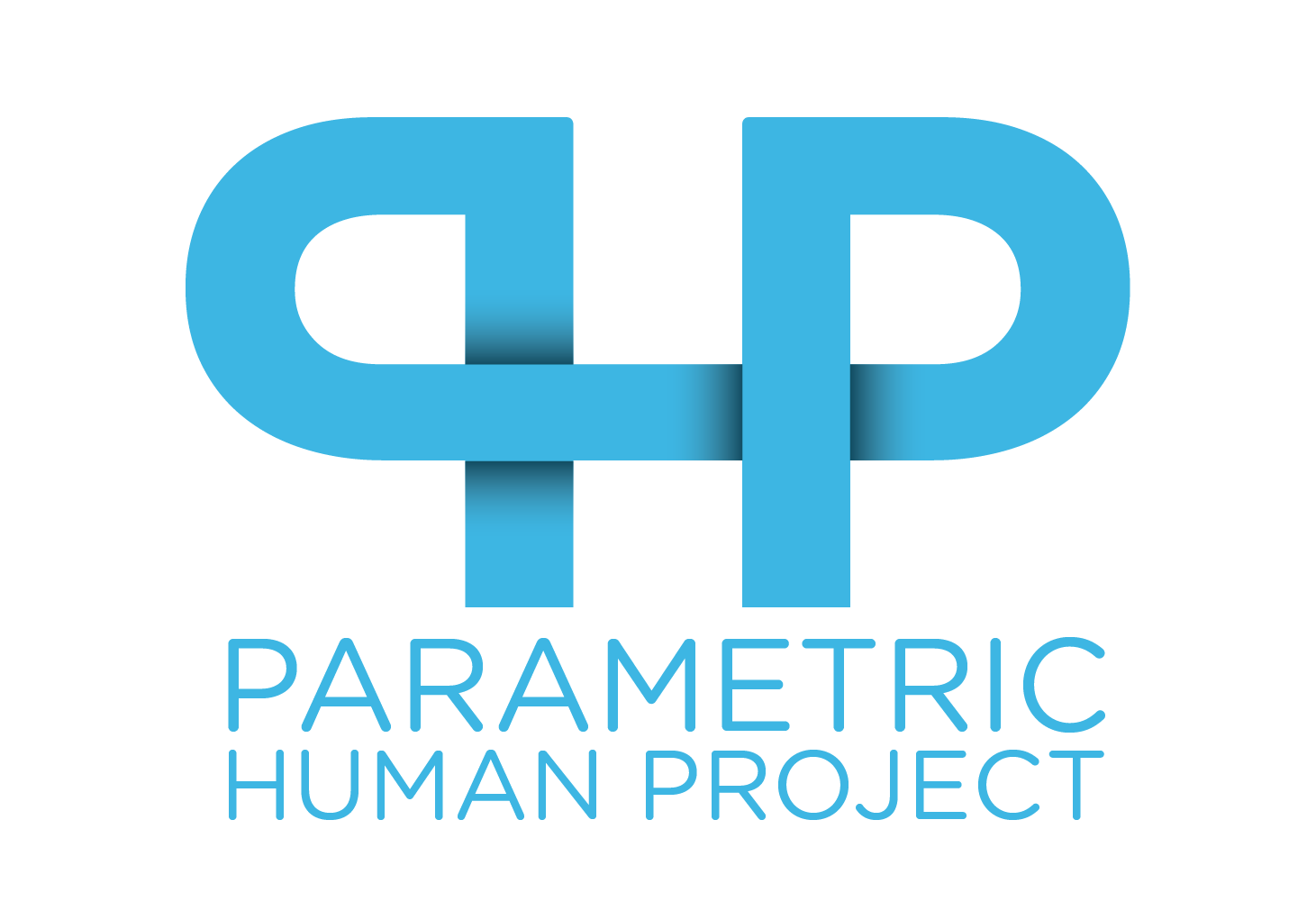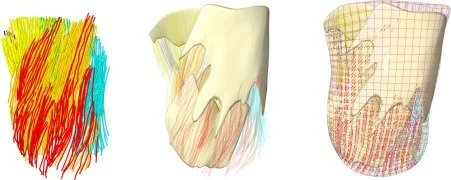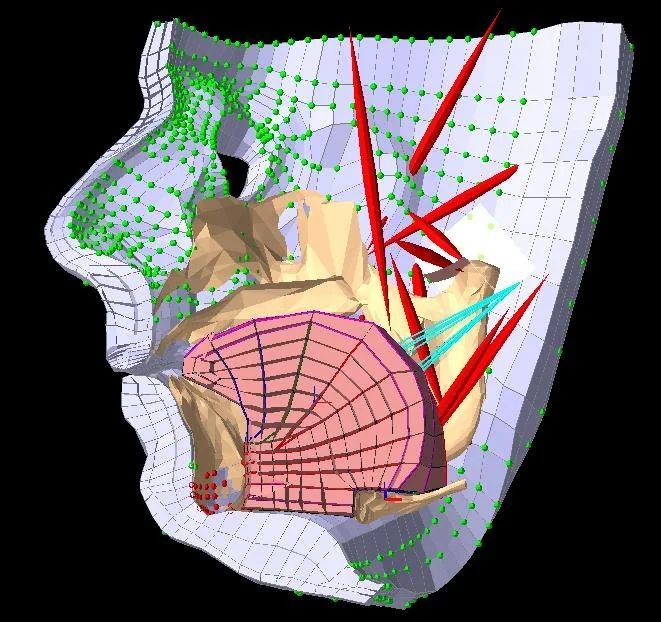John E. Lloyd, Ian Stavness, and Sidney Fels, "ArtiSynth: A fast interactive biomechanical modeling toolkit combining multibody and finite element simulation", Soft Tissue Biomechanical Modeling for Computer Assisted Surgery, pp. 355-394, Springer, 2012.
Masseter and temporalis muscle fiber bundles and tendons with underlying bone volume, segmented from a CT scan.
[Credit: Zhi (James) Li, Anne Agur, Division of Anatomy, Department of Surgery, Faculty of Medicine, University of Toronto.]
Masseter muscle fiber bundles and aponeurosis layers with underlying bone volume, segmented from a CT scan.
[Credit: Zhi (James) Li, Anne Agur, Division of Anatomy, Department of Surgery, Faculty of Medicine, University of Toronto.]
“At this point we are using muscle data of the face and masseter to model the dynamics of these components from the PHP data set. As the Parametric Human Project expands, we plan to use the rest of the muscle and geometry data of the upper airway as it becomes available,” Dr. Fels stated. These are notoriously difficult areas of the body to image and to collect detailed static and dynamic data from, thus the Parametric Human Project provides a valuable foundational component to the research effort. The models produced by the ArtiSynth community ultimately target all the functions of the head and neck, including speaking, chewing, swallowing and breathing that will be used for advanced digital surgical treatment planning for oral cancer and trauma. As oral cancer is the fastest growing cancer in the world, PHP will directly impact the lives of many people, nationally and internationally, by providing improvements to the treatment and care of these patients.
Peter Anderson, Sidney Fels, Negar M. Harandi, Andrew Ho, Scott Moisik, C. Antonio Sánchez, Ian Stavness, Keyi Tang,
"FRANK: A Hybrid 3D Biomechanical Model of the Head and Neck"
In Translational Epigenetics, Biomechanics of Living Organs, Academic Press, Volume 1, 2017, Pages 413-447]
Sid has been in the department of Electrical & Computer Engineering at the University of British Columbia since 1998. He received his Ph. D. and M.Sc. in Computer Science at the University of Toronto in 1994 and 1990 respectively. He received his B.A.Sc. in Electrical Engineering at the University of Waterloo in 1988. He was recognized as a Distinguished University Scholar at UBC from 2004. He was a visiting researcher at ATR Media Integration & Communications Research Laboratories in Kyoto, Japan from 1996 to 1997. He is internationally known for his work in human-computer interaction, biomechanical modeling, neural networks, intelligent agents, new interfaces for musical expression and interactive arts.
Simulation
Finite Element Modeling (FEM)
Prof. Sid Fels, Director of the Human Communication Technologies Lab at the University of British Columbia, has had a long-time interest in creating a biomechanically driven speech synthesizer that ultimately can be controlled by hand gestures. To this end, Sid has been pursuing 3D biomechanical modeling and simulation of the function of the head and neck region for over a decade. Working with his team, they have created a world leading human articulation synthesis biomechanical modeling and simulation environment, called ArtiSynth (www.artisynth.org). The software can simulate general human biomechanics as well as the complex dynamics of the upper airway. A major component of this work requires high-quality models of the anatomy associated with the upper airway, such as the tongue, soft palate, jaw, hyoid, lips and face. To make these models as accurate as possible, detailed geometry and motion data of the head and neck region is needed, which the Parametric Human Project (PHP) provides.






